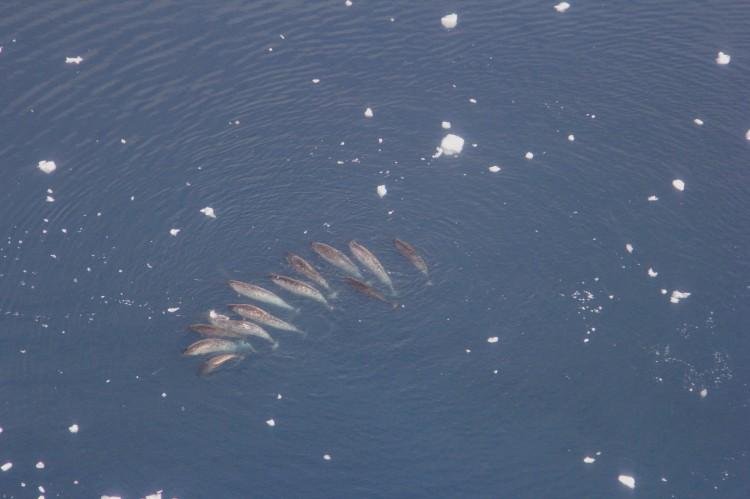A pod of narwhals swimming in Greenland's Melville Bay. Photo by Kristin Laidre/University of Washington
Feb. 12 (UPI) -- The lives of narwhals have remained mostly a mystery to scientists. But new research is beginning to offer insights into the behaviors and movement patterns of the elusive toothed whales.
Narwhals are known for their long tusk. But because they spend much of their lives at significant depths, they're difficult to study.
The new insights were made possible by data collected from 15 narwhals tagged with satellite tracking devices. For several years, scientists at the University of Washington have watched the whales congregate near the glacial fjords in Greenland's Melville Bay.
Scientists compared the whales' movement patterns to data on the physical properties of Greenland's glaciers to better understand why the whales prefer some glaciers more than others. The data suggests narwhals like to hang out near glaciers with thick ice fronts and minimal calving activity.
"Narwhals like slow-moving, big walls of ice where conditions are still and serene instead of a lot of runoff and disturbance," Kristin Laidre, a marine biologist at the University of Washington's Polar Science Center, said in a news release.
It's not clear why the narwhals prefer a more static marine setting, but scientists think heavy freshwater outflows from increased calving activity could diminish the abundance of the small marine species they depend on for sustenance.
Previous studies have shown that freshwater is becoming more abundant in Greenland's fjords as the climate continues to warm. Scientists hope additional research will help them better understand how narwhals will adapt to Greenland's shifting coastal ecosystems.
"Arctic marine mammals are really good indicators of climate change because they are very specialized," Laidre said. "They are finely attuned to specific environmental conditions, so they are good indicator species for how the physical changes many scientists are documenting in the Arctic can reverberate throughout the ecosystem."
Laidre and her colleagues are presenting their investigation of narwhals at the 2018 Ocean Sciences Meeting in Portland, Oregon, on Monday.















